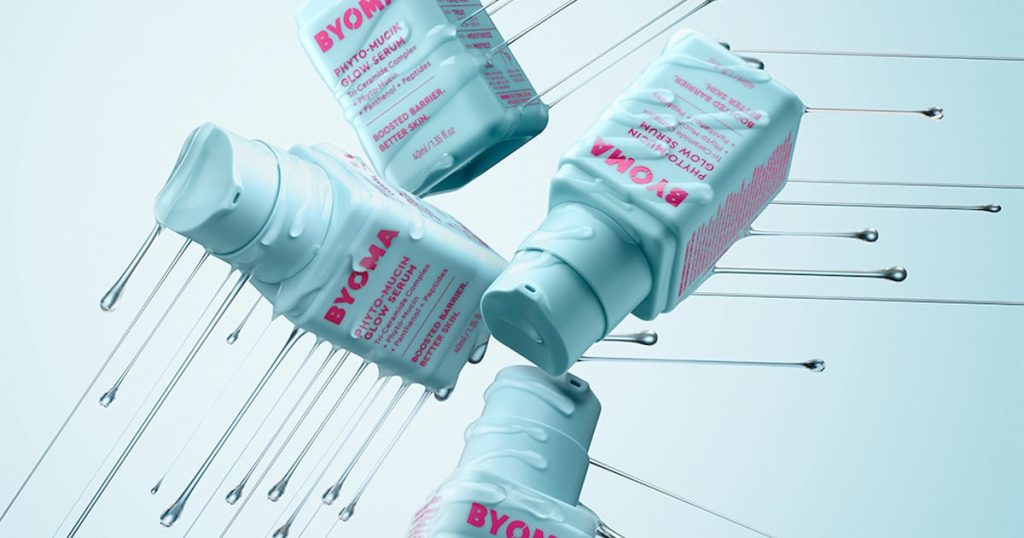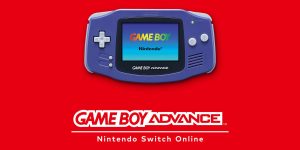
As snail mucin became a veritable TikTok beauty phenomenon two years ago, skincare startup Byoma saw an opportunity.
Originally found in Korean formulations and known for its glassy finish, snail mucin’s skyrocketing popularity left out beauty shoppers who avoid animal-derived ingredients. So in 2023, Byoma got to work creating a plant-based alternative for vegan (or generally snail-wary) shoppers and adding it to what founder and CEO Marc Elrick called a “super serum” that was developed over five years. This week, the ingredient was front and center in the brand’s newly launched Phyto Mucin Glow Serum.
The launch is just one example of how TikTok-driven product crazes have made their way into countless beauty brands’ lineups for nearly half a decade. Today, consumer trends and viral products “significantly” influence the development of future product lines for brands, said Clare Hennigan, principal analyst for beauty and personal care at Mintel, adding that the standout launches have either been affordable dupes or brands introducing a fresh spin to a popular product category.
Sales booms for Dior lip oil or Drunk Elephant bronzer drops have been quickly followed by a wave of brands (often referred to as “fast followers”) launching their own versions of popular items. However, while fast fashion brands can churn out copycat clothes in a matter of weeks, the beauty pipeline generally moves much slower. At least a two-year-timeline is especially common for those that pride themselves on original formulations tested through clinical trial processes. Brands must figure out how to launch on-trend products without missing the moment. As a flood of trending products have hit the market, winners have been able to stand out through savvy marketing and retail strategies, such as E.l.f Beauty with multiple products over the years, Glow Recipe with its bronzer drops and Byoma with its milky toner last year.
But TikTok’s uncertain future poses a wrinkle. Though the app’s shutdown last month was short-lived, its fate still hangs in the balance — which means that beauty brands must plan for a future where the industry’s biggest growth engine may no longer exist.
“TikTok is where these trends are starting,” said Leslie Hall, founder and CEO of paid social marketing agency Iced Media. “Trends wouldn’t go away,” Hall said, but she predicts it would become more difficult for smaller indie brands to achieve rapid growth from going viral relying on other existing platforms.
TikTok-Led Launches
Even though TikTok has sped up the trend cycle, products that go viral on the app have proven to have a degree of staying power.
Snail mucin, for instance, first took off on TikTok in 2023, when K-beauty brand Cosrx’s Advanced Snail 96 Mucin Power Essence went viral, but snail mucin-inspired launches are just starting to roll out now: US-based Pacifica launched its own vegan snail slime in 2024 after K-beauty e-tailer Soko Glam has been growing its assortment of snail mucins by Korean brands like Tony Moly.
“When you look at things like ‘jelly doughnut’ or ‘pirate girl’ or ‘mob wife,’ those are going to be a bit more fleeting,” said Hall, explaining that ”sophisticated practitioners in the industry” should be able to glean useful, high-level insights from ephemeral viral moments. “The snail mucin trend does have a bit more longevity,” she said, noting that Cosrx’s version can still be found on the Amazon beauty best sellers list to this day.
If it follows other TikTok-viral categories, this is likely just the beginning. Last year, sales went wild for Byoma’s Hydrating Milky Toner, a product type still peaking in popularity with versions from Laneige and Rhode (and more than a few fast followers). The product is still sold out on Byoma’s DTC site.
The craze over Drunk Elephant’s D-Bronzi bronzer drops was another phenomenon that turned a relatively obscure product into a staple and inspired dozens of other options. After influencer Alix Earle first popularised the product in December 2022, brands unveiling their own versions in 2024 were able to achieve strong sales over a year following Drunk Elephant’s viral moment. E.l.f. Beauty’s Bronzing Drops became the brand’s “best product launch ever” on its DTC site, CEO Tarang Amin said on the company’s 2025 fiscal year first-quarter earnings call, and Glow Recipe’s Hue Drops sold out quickly when the product was first launched.
TikTok Shop has helped to accelerate these trends even further. The success of the brand’s latest Hue Drops shade, Rosy Glow, came in part from the fact that the brand released the product exclusively on TikTok Shop before other channels and retailers, said Hall, whose company handled the TikTok launch campaign for the product.
With TikTok Shop exclusives, “creators are going to be highly motivated to want to get that sample request and make content for the brand, especially in that phase before the product becomes widely available at other retailers,” said Hall.
Rolling the R&D Dice
Launching a product in a viral category has always been challenging, even without a looming social media ban. With the length of their pipeline, which can span anywhere from a few months to many years, brands have always had to separate micro trends from those with staying power. This process is both an art and a science.
Sasha Plavsic, the founder and CEO of Ilia Beauty, said the virality of the brand’s Base Face Milk, a milky toner, was a result of lucky timing; she had already been testing samples of the product when other brands’ versions went viral.
“The timeline is usually two years, so if we think something will trend in two years, we could take a risk and go after it,” she said. But she said Ilia is most focused on generating customer loyalty and repeat purchases of full skincare routines. “Ultimately, we’re looking to create products that make sense within our current lineup and that a customer can easily navigate to within the brand.”
Now, the question is not only whether a current product trend will stay popular on TikTok, but if it could survive on other platforms if TikTok were to vanish permanently. Brand founders are emphasizing the importance of using tools beyond TikTok to research trends and gauge consumer demand. Elrick noted that Byoma develops its products through clinical research and data collected from customer feedback, including interaction with its tools on its website such as its skin analysis, looking at which problems with their skin they want products to address.
“We’re taking all this data and then looking at cultural trends, consumer trends, retail trends and category trends,” he said.
Experts and founders also agree that beauty trends have certainly been able to take off before TikTok’s existence, and will likely be around after, even if they aren’t as wildly viral. However, it could lead to a dupe culture slowdown.
“A TikTok ban wouldn’t eliminate viral products entirely but could slow the emergence of micro-trends and extend the time between a product going viral and its availability on the market,” said Hennigan.
UPDATE 2/6/2025: The article was updated to specify that Glow Recipe’s Hue Drops shade that launched on TikTok Shop was Rosy Glow.








